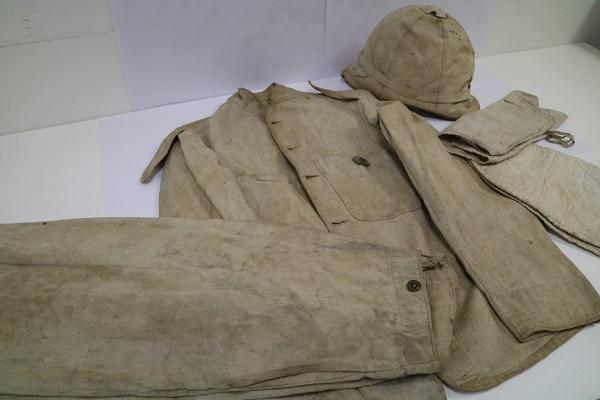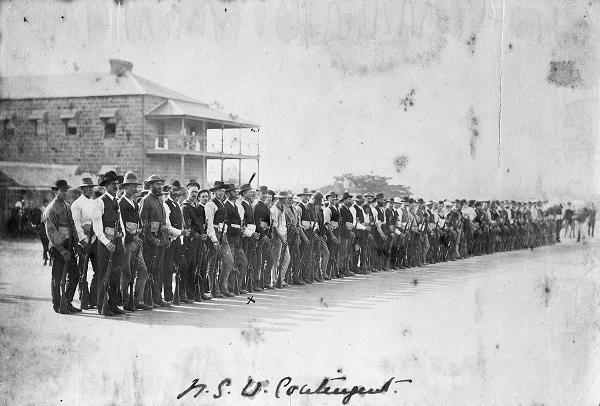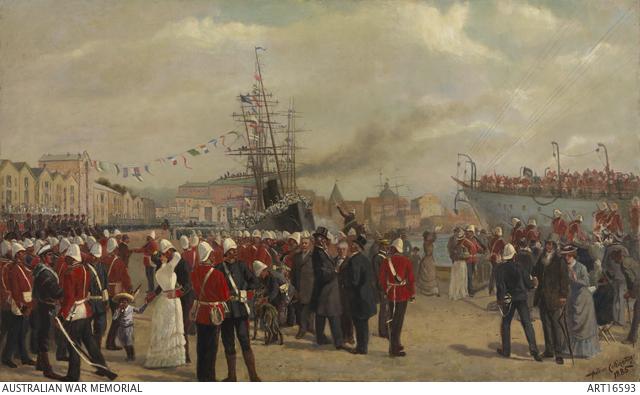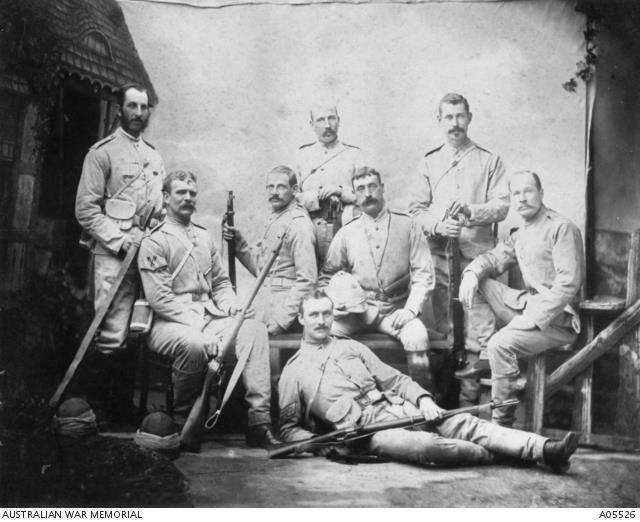New uniform from the Sudan
The Memorial has recently received the uniform worn by Private Arthur Connor Barrett of C Company of the New South Wales Contingent to the Sudan. The cotton khaki uniform, consisting of jacket, trousers, neck protector, helmet, and holdall, is a highly significant acquisition to the National Collection, as it was previously believed that no such uniforms existed.

Uniform of Private Arthur Barrett
On 26 January 1885, Major General Charles Gordon was killed in the Sudan by followers of Muhammad Ahmed bin Abd Allah, known as the Mahdi. Gordon had been a popular heroic figure throughout the British Empire, and the siege of Gordon and his Egyptian army at Khartoum led to great pressure on the British Government to militarily intervene. Gordon was killed before the relief force could arrive, causing public outcry in Britain and the colonies.
William Dalley, Acting Premier of New South Wales, sent the Imperial Government a cable on 12 February, offering to send a contingent in support of British operations in Sudan. The offer was accepted and New South Wales raised a force comprised of an infantry battalion, artillery battery, and field ambulance; 770 men in total.

Volunteers for contingent at Victoria Barracks wearing various civilian and military clothes
On 19 February 1885, 22-year-old tailor Arthur Connor Barrett enlisted for service with the contingent. Unlike most of the volunteers, he had no previous military experience. He was provided with a uniform consisting of a scarlet tunic with blue facings, blue trousers, a white helmet, and 1882 pattern valise equipment. On the afternoon of 3 March, Barrett and the men of the contingent marched through Sydney to Circular Quay, cheered on by a crowd of tens of thousands as they went. They boarded the ships Iberia and Australiasian and set sail for the Sudan.

The Departure of the Australian Contingent for the Sudan – Arthur Collingridge 1885
The traditional scarlet tunics of the British Army, which had been widely adopted in the forces of the Australian colonies, were considered a detriment in the Sudan, and had been discarded by the British in favour of khaki cotton uniforms. The New South Wales Government made an order for 1,000 of these uniforms, to be made in Britain and then made available to the contingent upon arrival. When Barrett arrived at the Red Sea port of Suakin on 29 March, he handed over his scarlet tunic and was given a new khaki cotton uniform, which is now in the Memorial’s National Collection.

Men in their khaki uniforms after returning to Sydney
Once in Suakin the contingent joined a British force under the command of Major General Gerald Graham VC. Early on the morning of 2 April, the infantry battalion joined a British force of about 10,000 men marching to the village of Tamai. The expedition marched as a hollow square, 200m wide and 500m deep. They saw some minor skirmishing, but the majority of the Mahdi forces had fled into the nearby hills. The men of New South Wales suffered three minor casualties. After Tamai, the contingent spent most of its time working on the railway being constructed toward the town of Berber, with the only casualties being the result of disease. On 17 May, after seven weeks in the Sudan, the contingent set sail for home.
When Barrett and the other men of Goulburn arrived home they were met with a parade, after which a ball was held in their honour. Barrett resumed working as a tailor, and married Emma Richardson with whom he had six children. He was elected to the Goulburn Borough Council in 1895, and held that position until 1908. In 1897, he was commissioned as an officer of E Company of the 6th Infantry Regiment (Australian Rifles), but his commission was taken from him the following year after an altercation with another officer. He served as Mayor of Goulburn in 1902. In 1909, he moved to Marrickville in Sydney, and began working for the New South Wales Railways. Barrett died on 8 September 1949.
Most members of the New South Wales Contingent are believed to have discarded their uniforms upon return to Australia. Some held onto them, wearing them at reunions and on parades, but over time even those uniforms were disposed of. As a tailor, Barrett was able to preserve his uniform, and it was then treasured by his family until it was donated to the Australian War Memorial.